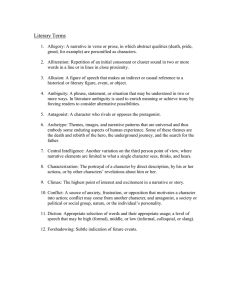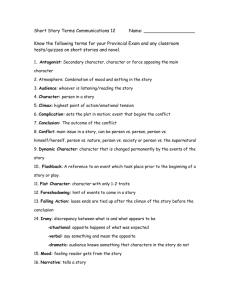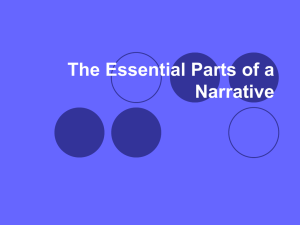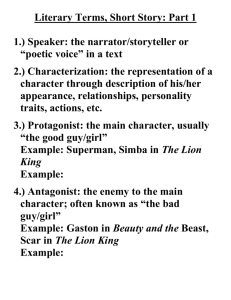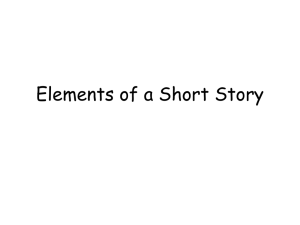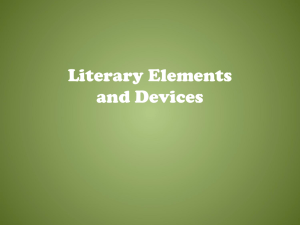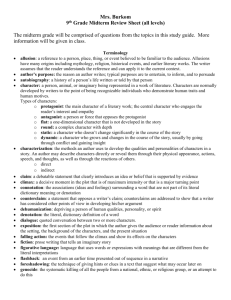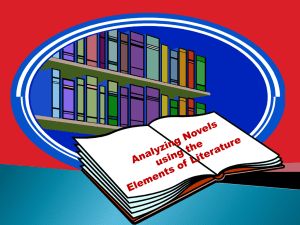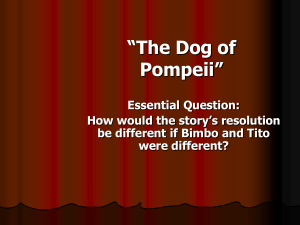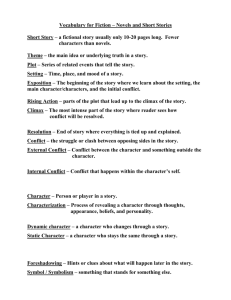Literary Terms
advertisement
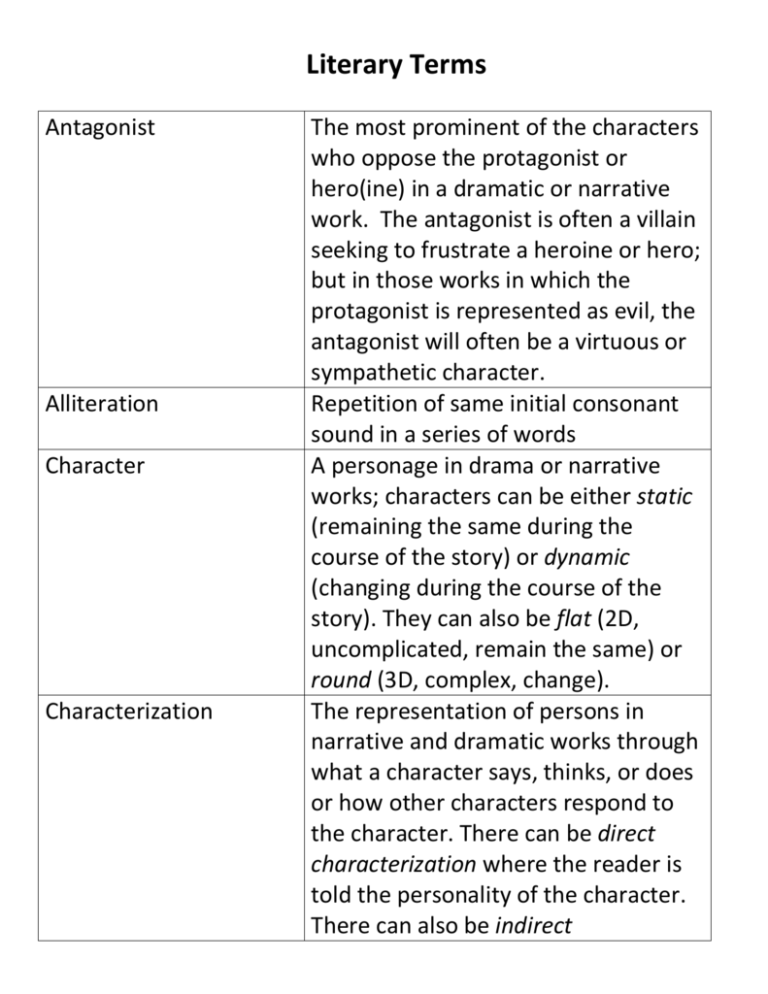
Literary Terms Antagonist Alliteration Character Characterization The most prominent of the characters who oppose the protagonist or hero(ine) in a dramatic or narrative work. The antagonist is often a villain seeking to frustrate a heroine or hero; but in those works in which the protagonist is represented as evil, the antagonist will often be a virtuous or sympathetic character. Repetition of same initial consonant sound in a series of words A personage in drama or narrative works; characters can be either static (remaining the same during the course of the story) or dynamic (changing during the course of the story). They can also be flat (2D, uncomplicated, remain the same) or round (3D, complex, change). The representation of persons in narrative and dramatic works through what a character says, thinks, or does or how other characters respond to the character. There can be direct characterization where the reader is told the personality of the character. There can also be indirect characterization where the author shows things that reveal the personality of the character (think STEAL: Speech Thoughts Effects on others Actions Looks). Climax Any moment of great intensity in a literary work or the point in a story when a crisis is reached and resolution achieved. Conflict The tension in a situation between characters, or the actual opposition of characters. Conflict can be internal (i.e. individual vs. self) or external (i.e. individual vs. individual, individual vs. nature, individual vs. society, individual vs. supernatural, or individual vs. technology). Connotation Idea or feeling a word has on a reader. Example-what do you think of when you hear dove? Chocolate, soap, candy, peace, a bird, etc? Denouement/Resolution “Unknotting” the event or events following the major climax of a plot, or the unraveling of a plot’s complications at the end of the story. Denotation Literal meaning or dictionary definition of a word. Example-when you look dove up in the dictionary, you will get the definition “a white Dialogue Falling Action Figurative language Flashback Foreshadowing Hyperbole Imagery Initiating event Irony bird”. Spoken exchanges between or among characters in a dramatic or narrative work. That part of a play or story which follows the denouement or climax. Language which uses figures of speech such as metaphor, simile, alliteration; often used to enrich text by word images and figures of speech A return to an earlier time in the course of a narrative to introduce prior information. The giving of clues to hint at coming events in a story. Exaggeration for the sake of emphasis in a figure of speech not meant literally. Using the five senses to create a picture in the reader’s mind. The event or events in a plot which bring about a state of conflict and tension. A figure of speech, humorous or sarcastic, in which the writer’s words really mean the opposite of what they seem to say (verbal or rhetorical irony); a situation may also be ironic when an event takes place that turns Metaphor Narrator Narrative voice Onomatopoeia Plot Protagonist out to be the opposite of what the characters expected (irony of situation); to keep sustained irony, the writer may use the device of a naïve hero or narrator. A figure of speech in which one thing is described in terms of another. One who tells, or is assumed to be telling, the story in a given narrative The point of view being used in the story First person (uses I, me, my) Third person limited to the character or narrator (tells only what they see, hear, know) Third person omniscient (knows everything) Words whose sounds suggest their meaning The writer’s map for what happens in stories, how it happens, to whom it happens, and when it happens; the sequence of events in a story; development of the central conflict including initiating event, rising action, climax, falling action, resolution, and denouement The chief character in a story or play, Personification Resolution Rising action Setting Simile Symbol Symbolism Theme Tone who may also be opposed by an antagonist Applies human characteristics to nonhuman objects Those events which form the outcome of the climax of a play or story. That part of a play or story which precedes the climax The where and when of a story or play. In drama the term may refer to the scenery or props. Figures of speech that use the words like or as to make comparisons An object, animate or inanimate, which represents or “stands for” something else. The use of concrete and recognizable things to represent ideas Properly speaking, the theme of a work is not its subject but rather its central idea, which may be stated directly or indirectly. It can also be the lesson of the story. The reflection of a writer’s attitude, manner, mood and moral outlook in his/her work; even, perhaps the way his personality pervades the work.
